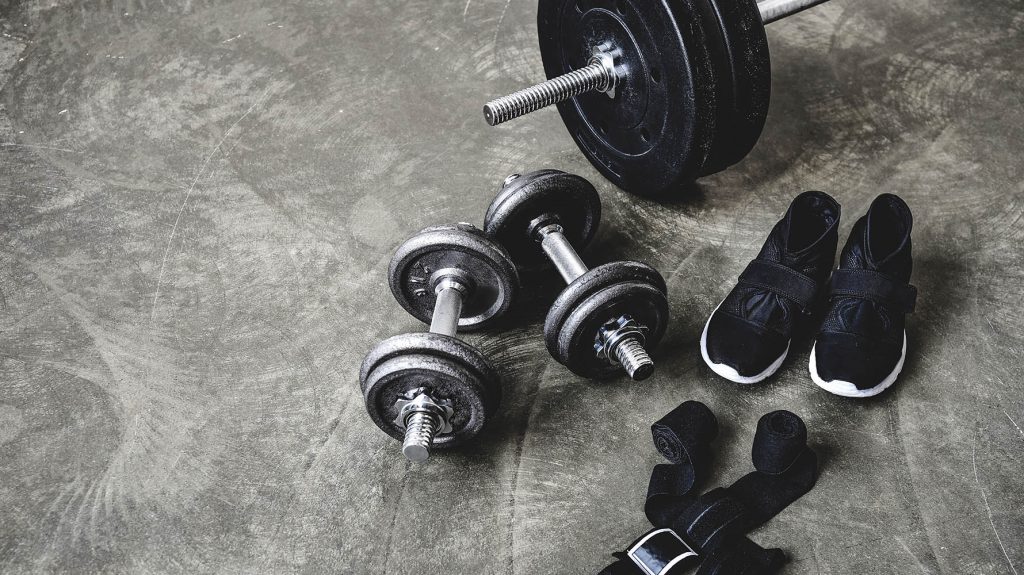How to Create a Workout Plan: 8 Main Points to Pay Attention to

Most men, at least once in their lives, firmly decided that from tomorrow they will start training in the gym. But waking up in the morning, and remembering yesterday’s promise, someone really took a gym bag with them, someone postponed a trip to the gym until tomorrow, and someone until better times. Many of those who turned out to be a strong spirit and a desire to pump up an athletic figure, having crossed the threshold of the gym, understood that desire alone is not enough, preparation is needed, including informative. Because the other attendees studied according to the “leaflet” drawn up by the workout plan, kept a diary of training and nutrition.
And realizing all the need for a clear workout plan, they were forced to plunge into the abyss of special literature, re-read books, magazines, and finally compose what no set of exercises.
Workout Plan: from Beginner to Professional
Of course, someone will say that during classes he is guided by intuition, listens to his body. But, unfortunately, not everyone can boast of such an understanding with their own body. Therefore, it is so important to have an individual workout plan, in which your goals will be determined by the selection of special exercises. Naturally, it will be corrected in the course of classes, but for a start it would be nice to compose it.
To create an ideal workout plan, you need to answer a few key questions and define goals. So, below are the questions, the answers to which will help you take the right course.
- What do you expect from your workout plan? What do you want to achieve?
For what purpose did you decide to go to the gym? To become stronger, that is, to develop strength? Or do you want to build muscle? Or maybe a certain muscle group requires work? Lose weight? Or all together? Therefore, first outline the goal or goals.
- What muscle groups are you going to work on following the workout plan? And with what exercises? To prevent the workout plan from becoming endless, you need to know in advance which muscles you are going to work out. Otherwise, you will strive to load all muscle groups. After determining the target muscles, you need to choose the appropriate exercises, of which there are a great many. Do not hurt the definition of techniques: you will be using weight loss sets or forced reps.
- Decide on the days of training. What days are you free and can devote a few hours to sports? How many days per week can you go to the gym? How much do you need? Just because you can make time to exercise every day after work doesn’t mean you have to exercise five times a week. If you have a busy work schedule or sometimes rush jobs, then you shouldn’t rush to the gym on such days and load your already tired body in full. Listen to your feelings, the workout plan should not contradict your lifestyle. If you are very tired, then it may be better to train tomorrow or today, but in a small amount. There is no need to chase the number of classes, it is better to pay attention to quality. Know that you can achieve great success by training three times a week and five times. Both low and high intensity training can be beneficial.

Exercise, Workout Time and Other Factors
- Training time. When can you train during the day? The set of exercises should be measured. Maybe it is more convenient for you in the morning, afternoon or evening? After work, the body is more tired than in the morning, but in the morning there may not be enough energy for exercise. During the day, when there is enough energy, not everyone can do it due to being busy. Therefore, correlate the possibilities and wishes, and choose the training time.
- Many people are interested in the duration of classes in a set of exercises. How long does it take to accomplish all that was conceived, but also not to overtrain? Here you need to take into account the number of training sessions. If you decide to train several times a day, five times a week, then it is recommended to train for 25-35 minutes. If you go to the gym three times a week, then a workout of 1 hour and 15 minutes will be optimal, taking into account the warm-up. If, for some reason, you were forced to temporarily interrupt your training, then extend the training to 2 hours.
- To compose a set of exercises, select the exercises and their number. What exercises do you plan to use and how much?
For example, if you choose one main exercise for each muscle group, then it will be strength training. Since the exercise is performed with large weights. If you do two exercises for each group, there will be a balance between intensity and volume. Or, as an option: alternate presses and deadlifts. For example, on Monday do only bench presses, on Wednesday – deadlifts.

Final Steps to Create a Workout Plan
- Identify the most significant muscle groups and exercises for yourself. What is more important for you: pump up your arms, legs, develop strength, in a word, what result do you need. And as a consequence, decide what exercises you need to achieve this result, and devote more time to them.
- How many reps and sets do you plan on doing in one workout? This, one might say, is the most important point that a workout plan should show off. It is not enough to decide on the exercises, you need to choose the right number of their approaches. The number of sets and reps depends on your goals. Ten reps per set is recommended to build muscle mass; fewer reps are performed with strength training. For each exercise, 2-3 sets are enough.
Now you know how to create a workout plan. Take your time planning your training. Think carefully point by point. A workout plan is not an easy task. The more seriously you approach the preparation of the program, the faster you will achieve visible results.

Example of a 6-Week Workout Plan
| № | Exercise | Week 1 | Week 2 | Week 3 | Week 4 | Week 5 | Week 6 |
| Day 1 | |||||||
| 1 | Barbell Squat | 4*(4*2) | 3*(4*2) | 6*(6*2) | 2*12 | 4*(4*2) | 3*(4*2) |
| 2 | Bent-Over Barbell Row | 4*(4*2) | 3*(4*2) | 6*(6*2) | 2*12 | 4*(4*2) | 3*(4*2) |
| 3a | Barbell Bench Press | 3*6 | 3*10 | 3*5 | 2*20 | 3*6 | 3*10 |
| 3b | Standing Barbell Curl | 3*6 | 3*10 | 3*5 | 2*20 | 3*6 | 3*10 |
| 4a | Upright Barbell Row | 3*5 | 3*7 | 3*3 | 2*12 | 3*5 | 3*7 |
| 4b | Glute Ham steroid cycling Raises (GHR) | 3*max | 3*max | 3*max | 2*8-10 | 3*max | 3*max |
| 5 | Seated Calf Raises | 3*20 | 3*15 | 3*30 | 3*10 | 3*20 | 3*15 |
| 6 | Hanging Knee Raise | 3*max | 3*max | 3*max | 3*max | 3*max | 3*max |
| Day 2 | |||||||
| 1a | Barbell Deadlift | 4*6 | 4*8 | 5*5 | 2*12 | 4*6 | 4*8 |
| 1b | Dumbbell Shrugs | 3*8 | 3*10 | 4*6 | 2*20 | 3*8 | 3*10 |
| 2a | Close-Grip Barbell Bench Press | 3*5 | 3*8 | 3*3 | 2*12 | 3*5 | 3*8 |
| 2b | Medicine Ball Push-Up | 3*8 | 3*12 | 3*6 | 2*20 | 3*8 | 3*12 |
| 3a | Back Rack Split Squat | 3*8 | 3*12 | 3*5 | 2*15 | 3*8 | 3*12 |
| 3b | Wide-Grip Pull-Up | 3*max | 3*max | 3*max | 3*10 | 3*max | 3*max |
| 4 | Single Leg Dumbbell Calf Raise | 3*15 | 3*20 | 3*10 | 2*30 | 3*15 | 3*20 |
| 5 | Swiss Ball Crunch | 3*max | 3*max | 3*max | 3*max | 3*max | 3*max |
| Day 3 | |||||||
| 1a | Barbell Bench Press | 4*(4*2) | 3*(4*2) | 6*(4*2) | 2*12 | 4*(4*2) | 3*(4*2) |
| 1b | Weighted Reverse-Grip Pull-Up | 4*(4*2) | 3*(4*2) | 6*(4*2) | 2*12 | 4*(4*2) | 3*(4*2) |
| 2a | Barbell Romanian Deadlift | 3*10 | 3*15 | 3*8 | 2*20 | 3*10 | 3*15 |
| 2b | Barbell Push Press | 3*6 | 3*8 | 3*4 | 2*12 | 3*6 | 3*8 |
| 3a | Barbell Squat | 3*6 | 3*8 | 3*3 | 2*12 | 3*6 | 3*8 |
| 3b | Seated Barbell Curl | 3*12 | 3*15 | 3*8 | 2*20 | 3*12 | 3*15 |
| 4 | Seated Calf Raise | 3*30 | 3*25 | 2*50 | 2*20 | 3*30 | 3*25 |
| 5 | Oblique Extension | 3*12 | 3*10 | 3*15 | 3*8 | 3*12 | 3*10 |